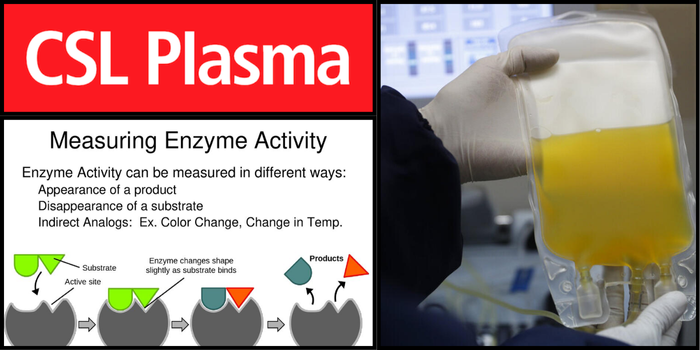
CSL Plasma
Enzymes are indispensable for diverse physiological strategies, and their measurement in CSL plasma is crucial for both diagnostics and treatments. This newsletter explores the techniques for how enzymes measured in CSL plasma, emphasizing their significance for accuracy and effectiveness.
We’ll also discuss the particular enzymes typically determined in plasma, along with ADAMTS13, and their function in scientific diagnostics. Gripping these measurements ensures higher treatment consequences. Moreover, for those looking to lessen the charges of plasma-derived cures, locating a CSL plasma coupon code can help make remedies more affordable without compromising the best.
Introduction to Enzymes Measured in CSL Plasma
Enzymes are organic catalysts that boost chemical reactions within the body, playing a vital role in retaining homeostasis. In CSL plasma, the size of enzymes is essential for diagnosing numerous clinical conditions and monitoring the effectiveness of plasma-based remedies.
State-of-the-art strategies are employed to evaluate enzyme interest ranges, concentrations, and normal functionality in plasma samples. These measurements provide treasured insights into manual treatment selections and ensure patient safety.
For those concerned with plasma donation, taking advantage of promotions like the current $100 CSL Plasma Coupon can make the technique even greater worthwhile, presenting an incentive to make contributions to life-saving healing procedures.
Why measure enzymes in CSL plasma?
The measurement of enzymes in CSL plasma is fundamental for several reasons:
- Diagnostic purposes: Enzyme ranges can suggest the presence of specific diseases or medical situations. As an example, expanded ranges of certain enzymes may additionally cause liver harm or muscle damage.
- Therapeutic Monitoring: Measuring enzyme pastime facilitates monitoring the effectiveness of remedies derived from CSL plasma, including clotting element concentrates used in hemophilia.
- Studies and development: understanding how enzymes behave in plasma supports the improvement of new treatments and diagnostic equipment.
Enzyme measurement techniques
Several methods are used to Enzymes Measured in CSL plasma, each presenting specific blessings and levels of precision. The maximum common techniques consist of:
Spectrophotometry
Spectrophotometry is an extensively used technique for measuring enzymes in CSL plasma. This technique involves measuring the absorbance of mild through the enzyme-substrate complex at a selected wavelength. The trade-in absorbance over the years is, except for delay, proportional to the enzyme’s pastime.
Chromatography
Chromatography, particularly excessive-overall performance liquid chromatography (HPLC), is used to break up and quantify enzymes in plasma. This method allows the right dimension of enzyme concentrations, making it perfect for tracking healing stages in patients.
Electrophoresis
Electrophoresis is a method that separates enzymes based totally on their length and price. This technique is mainly useful for studying enzyme isoforms and detecting abnormalities in enzyme characteristics.
How Enzyme Measurement in Diagnostic Applications
The dimension of enzymes in CSL plasma has massive implications for diagnosing diverse situations. For instance:
- Liver function assessments: Enzymes like alanine transaminase (ALT) and aspartate transaminase (AST) are commonly measured to assess liver features. Extended degrees of these enzymes may additionally suggest liver harm.
- Cardiac Markers: Enzymes collectively with creatine kinase (CK) and lactate dehydrogenase (LDH) are measured to diagnose coronary coronary heart assaults and distinct cardiac conditions.
The Role of Plasma Enzyme ADAMTS13
Plasma enzyme ADAMTS13 plays a quintessential role in the law of blood clotting. ADAMTS13 is accountable for cleaving the von Willebrand thing, a protein concerned with clot formation. Measuring the level of ADAMTS13 in CSL plasma is crucial for diagnosing and treating thrombotic thrombocytopenic purpura (TTP), a rare but life-threatening blood sickness.
Functional plasma enzymes
Practical plasma enzymes refer to enzymes that maintain their activity and capability within their plasma surroundings. The size of purposeful plasma enzymes is essential for evaluating their healing ability and for ensuring the protection and efficacy of plasma-derived treatments.
Enzyme Measurement Challenges
While measuring enzymes in CSL plasma is essential, several challenges can arise during the process:
- Enzyme stability: Enzymes can degrade over the years, mainly due to misguided measurements. The right garage and handling of plasma samples are necessary to maintain enzyme balance.
- Interference from other substances: certain materials in plasma can interfere with enzyme measurements, leading to false readings. Superior techniques and proper sample guidance can decrease those interferences.
Advances in Enzyme Measurement Technology
The sector of enzyme measurement has seen significant advancements in recent years, leading to greater accurate and greener techniques. those encompass:
- Computerized Enzyme Assays: Automation has streamlined the method of measuring enzymes in CSL plasma, decreasing the danger of human mistakes and increasing throughput.
- Point-of-care trying out: transportable gadgets are now available for measuring enzyme degrees on the bedside or in remote locations, making diagnostics more available.
- Next-generation sequencing: while historically used for genetic analysis, next-generation sequencing is being explored as a tool for measuring enzyme activity and figuring out novel enzymes found in plasma.
Conclusion
As technology continues to adapt, the strategies for Enzymes Measured in CSL plasma will become extra delicate, leading to even greater precision in diagnostics and remedies. The continuing studies into plasma enzyme ADAMTS13 and other functional plasma enzymes hold the promise of new treatment options and stepped-forward patient care.
In conclusion, the accurate measurement of enzymes in CSL plasma is a complicated but imperative procedure that underpins many components of current medicine. Through their perception of the techniques, demanding situations, and advancements on this subject, healthcare experts can ensure the accurate analysis and powerful treatment of diverse medical conditions.







